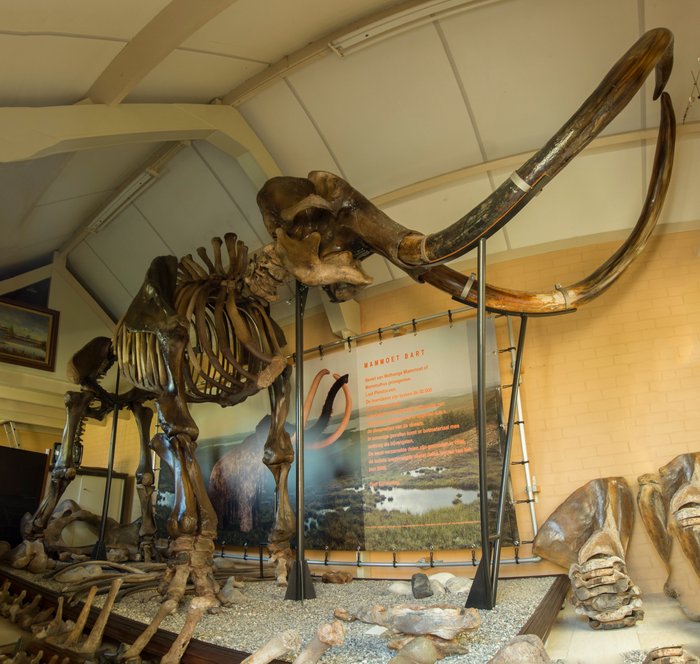No. 6325173

Complete skeleton of a Woolly Mammoth - Mammuthus primigenius - 5.5 metres long - 3.2 metres high
No. 6325173

Complete skeleton of a Woolly Mammoth - Mammuthus primigenius - 5.5 metres long - 3.2 metres high
Several kinds of Mammoths have existed. The Woolly Mammoth is best known, living as long ago as 600.000 years, during the Pleistocene. The bones of this skeleton are about 30.000 to 50.000 years old.
The Woolly Mammoth was adapted to cold climates, which was why it had small ears that couldn't freeze so quickly and it also had thick fur, which sometimes reached down to the ground. Research has shown that the woolly mammoth lived for about 35 years, which is quite a contrast to the modern-day elephant that can easily live for 50 years and more.
The tusks of the mammoth grew its entire life. The bulls tusks could grow fora bout 4 metres long. By looking at its tusks we can determine its age but also if it was a favourable year of grasses or vegetation. The tusks exist mainly out of rings or peals, like a tree. Comparing the mammoth to today’s modern elephant, their size do not differ that much.
On most imprints and paintings the mammoth is pictured during a snowstorm or on a snowfield. Mankind mostly speaks about the tundra of the mammoth, which rests rather on a fable than reality. Mammoths lived on mammoth steppe. He mammoth ate about 180 kilo of grass, which means it couldn’t have lived on snowfields alone. The grasses were hard to digest and were grounded by its large teeth. A mammoth lost and gained new teeth three times in life. They could die if their teeth wore out and couldn’t ground the grass anymore.
The mammoth nearly lived in most parts of Europe. They withdrew about 140.000 years ago because of the global warming. Just 4.000 years ago the last mammoth died in North Siberia.
Today’s North sea was a surface above sea level during the last Ice age. Because a lot of water was stored in huge icecaps the sea level was about 150 metres lower than today. The sea between the Netherlands and England., was in the Pleistocene a crossover for mammoths, dears, rhinos, lions, reindeers, horses, etc. This part called the mammoth Steppe. When the ice began to melt their bones ended up on the bottom. That’s why they call the North sea the largest mammoth cemetery of the world.
When fishermen pull their nets across the North sea bottom they regularly find fossils. Too bad that new fishing technology will prevent this from happening and will make tugs superfluous. Nowadays there is a high demand for these fossils of the sea bottom. It’s almost impossible to find a complete skeleton of a mammoth. There lived countless of mammals and to figure out which part belongs to whom, a bull or a cow, is a very difficult puzzle.
Because the bones have lain in saltwater for thousands of years they are full of salt crystals. All the fossils of this skeleton lay in sweet water to desalinate, slowly dried and capsuled by a layer of glue for the best conservation.
A mammoth skeleton counts about 270 bones. Almost every bone is original. Not even 10% is restored with plastic. In a tome you can see pictures of the process so you know what has been restored.
The entire process: collecting; restoring and mounting costs about 10 years. The skeleton rests on an exact frame so the bones would not be damaged. It is about 3.2 metres high and 5.5 meters long. It is an exceptional, beautiful, complete and vast copy. A true and unique piece for a museum. The mammoth is mounted in a walking position. Anatomically, everything is displayed correctly. Besides a lot of connoisseurs have seen it and were very enthusiastic.
This object was featured in
How to buy on Catawiki
1. Discover something special
2. Place the top bid
3. Make a secure payment
